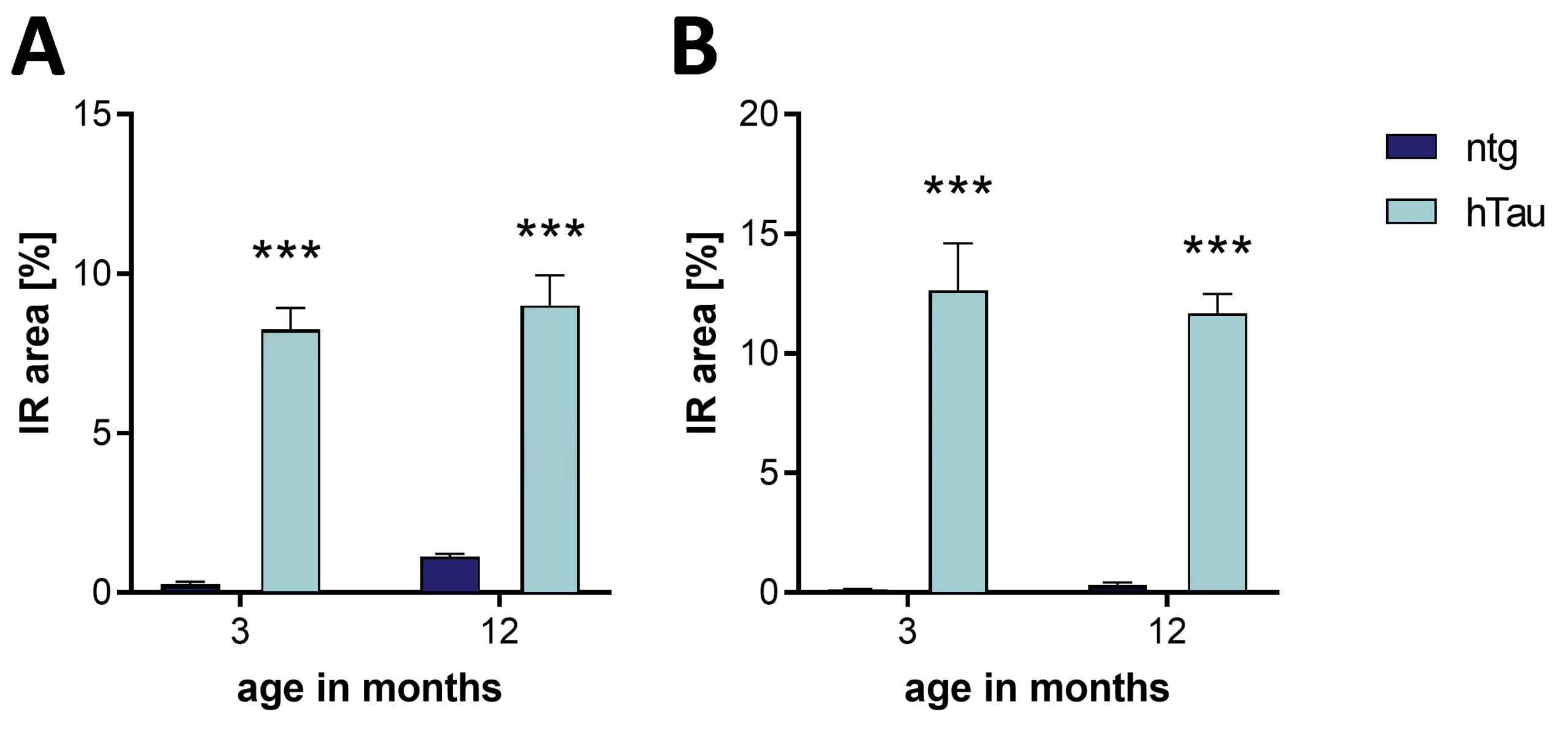hTau mice express human tau derived from a human PAC, H1 haplotype, known as 8c mice, while murine tau is knocked out by a targeted disruption of exon 1. hTau mice express six isoforms of human tau. hTau mice represent the most relevant Alzheimer’s disease (AD) pathologies such as age-associated tau hyperphosphorylation.
The most important characteristics of hTau mice are:
- Hyperphosphorylated tau
- Aggregated tau and paired helical filaments
Hyperphosphorylation of tau was measured in the hippocampus (data are not shown) and cortex of 3 and 12 months old hTau mice as shown in Figure 1. Moreover, soluble total and phosphorylated tau levels were measured in the brain of hTau mice as shown in Figure 2.

Figure 1: Quantitative analysis of ptau Ser202 (A) and Ser396 (B) levels in the cortex of 3 and 12 months old hTau mice compared to non-transgenic littermates. Immunoreactive area in percent. n = 8 per group. Mean + SEM; Two-way ANOVA with Bonferroni’s post hoc test; ***p<0.001. Similar results were observed for hippocampal ptau Ser202 and ptau Ser396.

Figure 2: Soluble total and phosphorylated tau levels in the brain of hTau mice. Soluble tissue fractions of 3, 6, 9, and 12 month old animals were analyzed for total, pThr231 and pThr181 levels by MSD immunosorbent assay. One-way ANOVA with Newman’s Keuls multiple comparison test. Mean ± SEM; n = 2-4.
Scantox offers a custom-tailored study design for hTau mice, and we are flexible to accommodate your special interests. We are also happy to advise you and propose study designs. hTau mice show relevant features of AD already at 3 months of age. Based on various options to study hTau mice, your study will be customized according to your requirements. Furthermore, wild type littermates are available as control animals needed for proper study design.
We are happy to evaluate the efficacy of your compound in the hTau mouse model! The most common readouts are:
